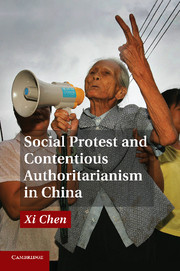Book contents
5 - Between Defiance and Obedience
Published online by Cambridge University Press: 05 December 2011
Summary
The two chapters in Part II have identified a particular institutional configuration that have facilitated and shaped popular protests in China. In Part III, my focus will shift from structure to agency. Despite the obvious importance of structures in explaining historical change, they can only constitute part of the story. As William Sewell remarks, “Structure forms the capacities and provides the resources necessary for human agency, enabling humans to reproduce themselves and their social world, but also enabling them to act in innovative ways and therefore occasionally to modify the very structures that shaped them.” Similarly, Doug McAdam argues, “Movements may largely be born of environmental opportunities, but their fate is heavily shaped by their own actions.” This and the following chapters thus focus on protesters’ strategies and tactics. Indeed, given that the political opportunity structure identified in this book puts a special emphasis on contradictions and ambiguities, protesters’ strategic decisions deserve a particularly important role in the explanations.
Ordinary people are often faced with a dilemma in their contentious interactions with an authoritarian state. To enhance their bargaining power, they need to employ some sort of “troublemaking” tactics such as engaging in disruptive activities or forming autonomous organizations. However, if they go too far, radical tactics may not only alienate their supporters, but also incur state repression. The choice between efficacy and safety appears as a trade-off, and it is very difficult to attain both at the same time. Yet ordinary people sometimes manage to engage in resistance while somehow remaining submissive. Their most common strategy is what James Scott calls “everyday forms of resistance:” Ordinary people carry out covert and individualized resistance while feigning obedience. Can ordinary people also mount public and collective resistance while remaining submissive? Rarely. Yet there are some cases, and China since the 1990s is one of them.
- Type
- Chapter
- Information
- Social Protest and Contentious Authoritarianism in China , pp. 135 - 158Publisher: Cambridge University PressPrint publication year: 2011

